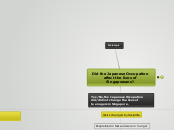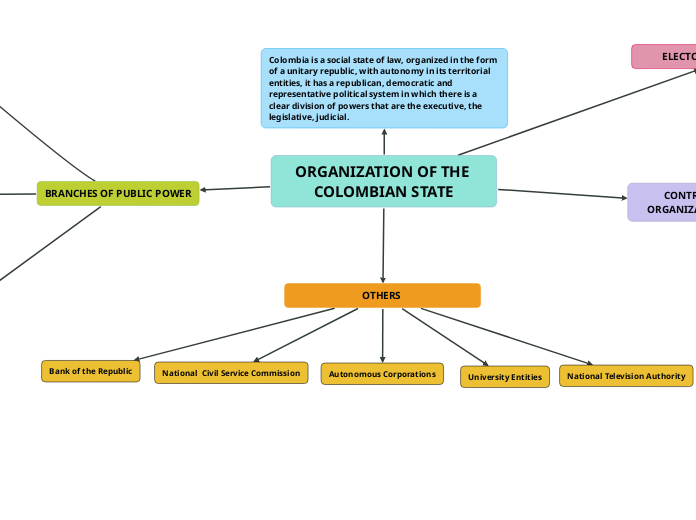If social conditions and lack of economic opportunity were the cause of J.D., which was the view of Strain theorists; than why was it that many (if not most) of those suffering from such pressures did not become criminals or delinquents at all?
If the social pressures were so powerful, then why was even the worst of the delinquents seem to be fairly conventional people, conforming in so many other times and ways?
Matza's (1964) theory of Delinquency and Drift'
The question covers a number of central concerns. These are:
This map relates to Section B of the exam, specifically question 2 of the optional questions. It aims to critically explore, analyse and critically evaluate David Matza and Gresham Syke’s theory of delinquency and drift, whose central thesis was primarily designed to explain juvenile delinquency. Points of analysis will be further complemented through a comparative analysis of other or alternative theories of juvenile delinquency.
Firstly, we will analyse David Matza’s initial theory of delinquency.
In attempting to understand the causes of delinquency, Strain theories study the question of why certain people violate social norms, for example by committing crime or breaking the law. Whereas, Social control theories such as that of David Matza and Gresham Sykes focus on the exact opposite, that is, why certain people conform to social norms.
CONCLUSION
Main points of critical evaluation
Main points of critical analysis
Objective
Aim
Recap
INTRODUCTION
Reasoning
What was the reasoning behind these choices?
Content
What/Which research, studies, philosophies, theories, evidence have you analysed, evaluated, explored, discussed in an attempt to answer the question.
Context
In what context does the question relate to?
Objectives
How might you answer the question?
Aims:
What is the question asking?
DESCRIPTION
Schools of Thought: Social Control Theories
Although it was not presented as a social control theory, David Matza's book, Delinquency and Drift (1964), incorporated several of the features of that type of theory.
Such theories accord primacy to relationships, commitments, values, norms and beliefs that are purported to explain why people do not break laws as compared to theories according primacy to motivating forces thought to explain why
people do break laws.
Social control theories of crime and delinquency attribute law-breaking to the weakness, breakdown, or absence of those social bonds or socialization processes that are
presumed to encourage law-abiding conduct.
Criminological Theories and explanations of juvenile delinquncy
A plethora of diverse sociological, psychological and criminological theories have been formulated in an attempt to explain the causes of juvenile delinquency
etiology of juvenile delinquency
Historical evidence of the use of the term during the our long and varied history.
The problem with definition of 'youth' and 'crime'
we automatically perceive our younger generations to be out and out delinquent
COMPARE/CONTRACT: Alternative theories of juvenile delinquency
Sampson and Laub's Age-graded theory of
The theory brings together social influences on crime, such as family and employment, with psychological predispositions.
This social psychological approach to crime adds some of the best features of strictly psychological and sociological approaches, for it acknowledges personal differences in criminal propensity, but it also makes a place for society to overrule, or at least counteract, these propensities.
They found that the troubled kids who got straightened out experienced some sort of turning point—an event or life circumstance that pulled them out of their criminal lifestyle and into a more conventional pattern of behaviour.
Such turning points included military service, employment, and marriage.
They developed this theory using some of the most fascinating data ever studied provided by Sheldon and Eleanor Gluck in the 1940's (a longitudinal study of troubled boys in Boston).
Sampson and Laub reconstructed the data and followed-up with the original respondents, who were then around 60 years old. Sampson and Laub found that some of the troubled boys ended up in trouble with the law for the rest of their lives, while others lived very conventional lives and had no legal problems.
Hirschi ans Gottfredsons (1990) General Theory of Crime
The path toward or away from crime commences early in life, they contended further that the level of self-control depends on the quality of parenting in a child's early years.
Children with behavioral problems will tend to grow into juvenile delinquents and eventually into adult offenders (Gottfredson and Hirschi, 1990:155).
Self control, internalized early in life, determines who will fall prey to the seductions of crime (Grasmick et al., 1993:7).
Great emphasis is placed on parental upbringing, for this is the source of socialization that instills self-control in a child, though others play an integral role in the process of proper or improper socialization.
A General theory of crime presents a more specific control theory that recognizes self-control, rather than societal control, as the root of criminality or conformity.
CRITICAL EVALUATION: Stanley Cohen's 'Folk Devils and Moral Panic'
Techniques of Neutralisation
THE APPEAL TO HIGHER LOYALTIES
COMPETING SET OF RULES TO FOLLOW
THE CONDEMNATION OF CONDEMNERS
SHIFT FOCUS TO THOSE DOING THE CONDEMNING;
HYPOCRITES
THE DENIAL OF THE VICTIM
AGREES THAT DEVIANT ACTION WAS TAKEN AND
SOMEBODY WAS HURT, BUT, THE INJURY WAS NOT
WRONG
THE DENIAL OF INJURY
NOBODY IS CLEARLY HURT
DENIAL OF RESPONSIBILITY
IT WAS ACCIDENTAL OR CAUSED BY FORCES
OUTSIDE ONE'S CONTROL
Concept of Drift
Once the crime is committed the delinquent feels guilt and must balance their behaviour by returning to act in a law-abiding manner.
Drift can be described as soft determinism, which views criminality as partly chosen and partly determined.
The will to commit a crime occurs when one of these conditions is present; preparation and desperation. These allow the individual to form the decision to commit a crime.
Desperation activates the will to initially commit a crime because of an extraordinary occasion; or fatalism, which is the feeling of lacking control over ones surroundings (Matza, 1964).
Preparation occurs when a criminal act is repeated once the person realizes that the criminal act can be achieved and is feasible.
Sub-terrainian Values
Lastly, the deviant becomes aggressive because of their alienation from society (Matza and Sykes, 1961). This is clearly seen in gang rivalries when violence is used to protect “turfs” and reputations.
The purpose of this aggression is to show how tough they are and that they have achieved manhood.
Secondly, they do not view normal occupations as worth the work when they can make more money doing illegal acts.
Some researchers also noted that the behavior may not have solely monetary purposes, but also to gain rank and prestige among other criminals.
First, delinquents search for a thrill or an adrenaline rush.
This “rush” they seek is not easily accomplished through law-abiding means. The excitement may even be a result of the fact that the behavior is not accepted.
Bonds or Binds
To define, a 'Bond' or a‘Bind’ between an individual and laws is something that creates responsibility and control and this remains in place for most of the time.
How can we evidence this?
Delinquent youths are not engaged in delinquency 24/7. They spend most of their time in conventional activities.
Matza and Sykes further develop their views on delinquency as a result of a deviant sub-culture, which exposes the individual to crime and in turn teaches deviant behaviour or subterranean values. It is these that cause them to deviate from the norms of society.
Sykes and Matza also argue that delinquent acts are not as deviant as society would like to believe and that normal values are over-simplified.
CRITICAL ANALYSIS:
Original Intention
Although it was not presented as a social control theory, David Matza's book,
Delinquency and Drift (1964), incorporated several of the features of that type of theory.
Delinquent youth were “neither compelled nor committed to” their delinquent actions deeds, but
were “partially unreceptive to other more conventional traditions" (1964:28). In short, delinquent
youth could be depicted as “drifters,” relatively free to take part in delinquency. This argument
was a challenge to other theories in the 1960s which emphasized status frustration and the
adoption of oppositional values by delinquent youth. According to Matza, the delinquent "flirts"
with criminal and conventional behavior while drifting among different social worlds. Matza did
not identify any specific constraints or controls that keep youth from drifting, but drifters were
depicted as youth who have few stakes in conformity and are free to drift into delinquency.
Sykes and Matza wanted to build upon Arthur Sutherland’s Differential Association theory
That an individual learns criminal behaviour through “(a) techniques of committing crimes and (b) motives, drives, rationalizations, and attitudes” which go against law-abiding actions (Sykes and Matza, 1957:664).









